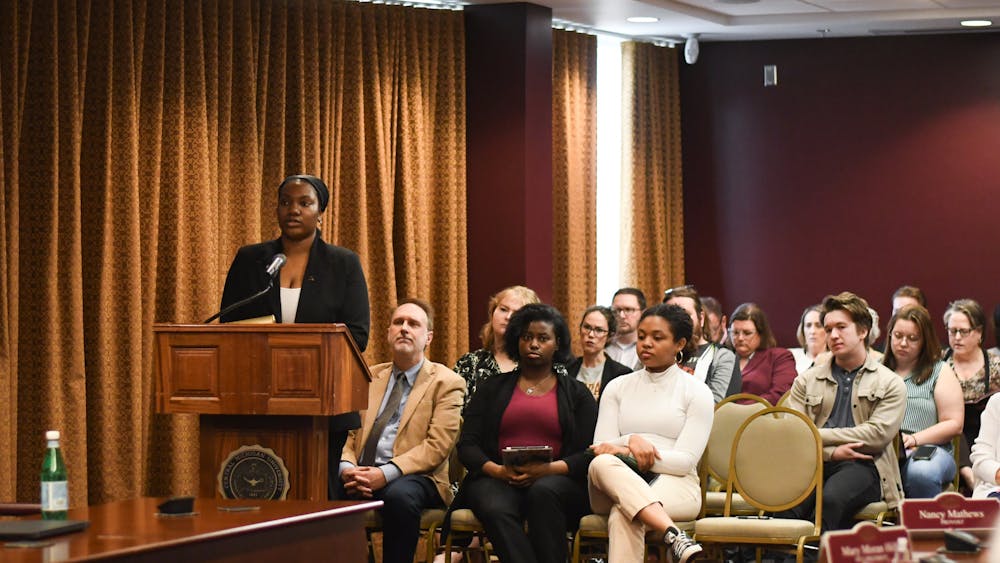New course hopes to educate on clean water issue
Sam Strahl said she is so passionate about water she decided to major in it.
The sophomore from Sault Ste. Marie is majoring in geology with a concentration in hydrogeology, because she wants to increase awareness of water issues.
“It’s a really important resource that’s not being recognized as a right,” she said. “I wanted to have an impact on how water was recognized or viewed and be on the right side of change.”
Strahl’s interest in water led her to sign up for Water as Life, Death and Power; a new course that spans three departments: anthropology, biology and chemistry. She said the interdisciplinary element appealed to her, because it brings together people from all different backgrounds to work on a problem as they would in the real world.
“I have no idea what the basis of anthropology is,” she said. “It’s teaching us that we need to rely on outside resources, and your way is not the only way.”
Catherine Willermet, assistant professor of anthropology, said the idea for the course came from a Universities Allied for Essential Medicines conference two years ago, where students brainstormed ideas for an interdisciplinary course about global health issues. All three faculty members for the course are advisers for UAEM.
Students in the course look at water issues both locally and in developing countries and then come up with solutions to improve access to clean water, said Stephen Juris, associate professor of biology.
Willermet said the course addresses a set of real life issues and encourages students to be activists in water rights, because access to clean water is a global problem. She said the class takes a problem-based approach by examining the issue from various perspectives.
“The structure (of most classes) is not set up for it,” she said. “It’s exciting to approach a problem in a way a real life situation would take place.”
Willermet said the different disciplines work together in the course as they would in a real-life situation.
“Not one discipline has all the answers,” she said. “When you go into the job force, this is what you’re going to be doing.”
Juris said the course forces students to look at a problem beyond a "myopic" viewpoint of a single department. He said it is important for students to realize that there are multiple views that need to be addressed.
"A lot of times, students get focused on their major," he said. "This course brings critical thinking to a new level."
The course teaches students to reach beyond their majors to find a sustainable solution, Willermet said. Students design a project that is interesting to them and could make a real difference in the world.
“People who cross disciplines and see problems from different angles are going to find a more effective solution,” she said.
Anja Mueller, associate professor of chemistry, said the course shows students that they can accomplish things that can have an impact worldwide. She said she believes interdisciplinary courses are a growing trend that will encourage students to participate in activism.
"It's something that's rare but should be expanded," she said.
Mueller said the chemistry aspect of the course involves understanding the properties of water, how water works with other materials and what that means for water treatment facilities. She said water issues involve not only technological and biological barriers but also power issues such as education and cultural traditions.
"It's a problem that involves almost every single field you can think of," she said. "And you need all those fields to solve it."
Willermet said anthropology is crucial for studying the human factor of the course. She said water is a resource that some people control while others don’t have access to it, and anthropology studies how to make those relationships equitable. She said part of the issue is “understanding the social and political structure of the group you’re working with—even if it’s the Mount Pleasant City Council.”
The course is taught Wednesdays and Fridays from 2 to 4 p.m.




